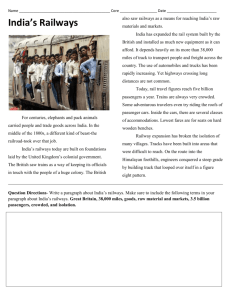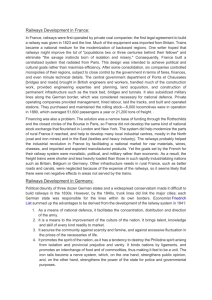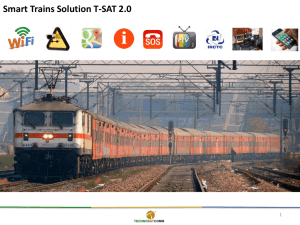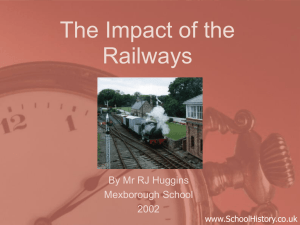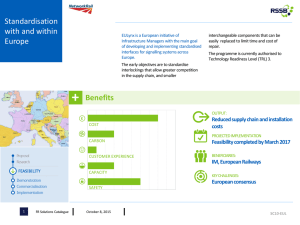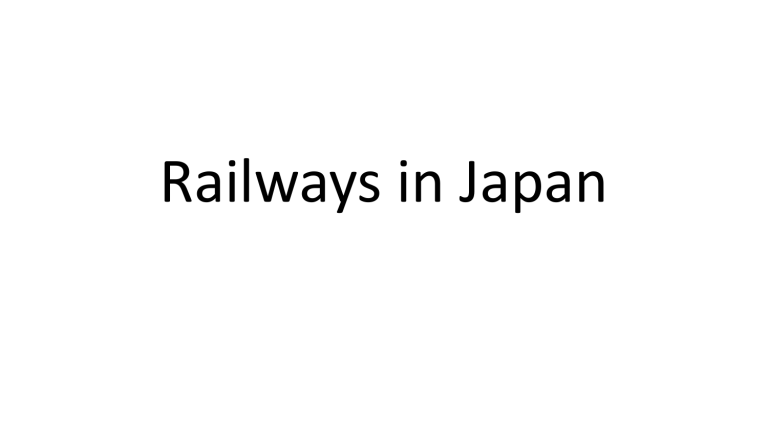
Railways in Japan Japan Railways • Railways in Japan include Japan Railways (JR), a group of six railway companies covering the entire country, plus a variety of companies, which operate in many larger cities. Japan Railways Japan Railways • JR is famous for its extreme punctuality. On the Tokyo commuter lines trains run through the stations at 1.5minute intervals at peak times. And of course its Shinkansen or “Bullet Trains” provide ultra fast and highly reliable rail links over all the length of Japan. Shinkansen or “Bullet Trains” Shinkansen or “Bullet Trains” Japan Railways • The history of railways in Japan dates back to 1872, when the first 29 km line was officially opened for public use between Tokyo and Yokohama. Its construction was completed under the guidance of British engineers. Japan Railways • After the WWII Japan considerably increased railway traffic on trunk lines. Soon, the main line between Tokyo and Kobe well as other principal trunk lines started double tracking to enlarge the track capacity. To meet the necessity of speeding up the running of trains, technical improvements were carried out. On the main trunk lines the top speed of the trains was increased from 60 km/h to 95 km/h, the speed of electric trains being raised to 120 km/h. Japan Railways • With the development of aviation and motor transport railways are losing their monopolistic position in the field of transportation in Japan. However, the New Tokaido Line, which was opened to high-speed traffic between Tokyo and Ship-Osaka in 1964, showed the great advantages of railways for longdistance transportations. The opening of the so-called Shinkansen railway in 1964 was an event of great importance in the country’s railway history. Japan Railways • The opening of the so-called Shinkansen railway in 1964 was an event of great importance in the country’s railway history. • The Shinkansen line was built as the Tokaido line had been overburdened with passenger and freight trains. This new line for super-high-speed trains is 553 km long and has the 1,435 mm gauge. Train sets of 16 cars run at the top speed of 210 km/h. Japan Railways • Pioneering the modern high-speed train in the 1960s, Japanese railway engineers have contributed to develop and refine rolling stock for the country’s Shinkansen high-speed rail network. Japan Railways • One of the most recent types is the Series “700 train set” which was jointly developed by two of Japan’s private rail companies. The Series “700” is based on the experience gained with earlier Series “300” and “500” train sets, creating new design offering the highest standards of performance, comfort, reliability and maintainability. Japan Railways • With 16 cars, the Series “700” are high-capacity trains, each providing seating for 1,323 passengers in a mixture of the first and second-class accommodation. Comfort improvements include an increased ceiling height compared with earlier Shinkansen train sets. Japan Railways • The Japanese National Railways pay great attention to the development of automatic signalling and computer-based information processing systems as well. The Automatic Train Control System is widely used by Japanese railways providing the most modern trains safety at very high speeds.

